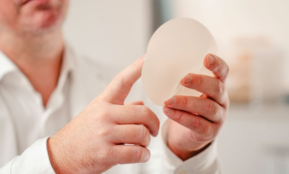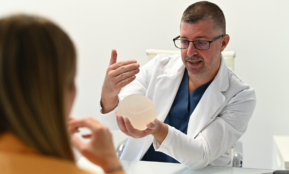Aesthetics
Face
The most modern facial treatments help you look younger, more elegant and happier.
Body
Feel comfortable in your body and correct sources of discomfort.
Chest
Make your wish for a better appearance come true and restore your self-confidence with aesthetic correction.
Hair and scalp
Minimally invasive solutions for hair loss and a natural look.
Issues
Find solutions to some of the most common aesthetic problems.
Treatments
Treatments

Hair and scalp mesotherapy

Thinning hair therapy with your own blood

Trichotest – DNA analysis of hair loss and baldness

Hair loss in women – causes and how to prevent it

Hair loss in men – causes and how to prevent it

Alopecia – hair loss
FACE

BODY

Implantology Center
Different methods of solving the problem of missing one or more teeth.
Prosthetics
The most common solution in cases of functional or aesthetic tooth damage.
Aesthetic Dentistry
Harmonious tooth shaping and tooth color correction according to your wishes.
General Dentistry
Modern and timely diagnostics, treatment and dental hygiene are the key to the health of your teeth.
Issues
Find solutions to some of the most common aesthetic problems.
About us
Locations
Description of the procedure
Inlay, Onlay and Overlay are prosthetic fillings, often called ‘indirect fillings’ (i.e., fillings).
Unlike classic fillings that are made and modeled in the mouth, Inlay, Onlay and Overlay are made in a dental laboratory based on a tooth impression, after which they are cemented into the tooth.
These three prosthetic fillings differ only in size, or the surface area they cover.
The inlay is placed in the middle of the tooth and has no contact points with the teeth of the opposite jaw when biting.
The onlay is larger and fills in tooth defects where it is necessary to build up the cusps of the tooth. It comes into contact with the opposing tooth when biting.
The overlay covers both the inner and outer parts of the tooth crown.
Their advantage is that they are stronger and longer lasting than fillings and represent a better aesthetic solution due to their stable color.
Inlay, Onlay and Overlay are a more beneficial solution because the tooth needs to be ground down less, and in this way healthy tooth tissue is preserved to the maximum extent.
This type of prosthetic replacement is used primarily on back teeth, while ceramic veneers are used for front teeth as an aesthetically superior option.
CAD/CAM technology
In our Polyclinic, we make crowns using the state-of-the-art Planmeca CAD/CAM system.
By using CAD/CAM technology, the dentist is in complete control of the final result and enables the tooth to be of ideal shape, size and color.
This method of making prosthetic replacements allows for production without a dental laboratory and/or with minimal assistance from a dental technician.
Candidates
Inlay, Onlay and Overlay prosthetic restorations are recommended for anyone who has damaged tooth tissue and would like a longer-lasting and higher-quality solution than a classic filling.
They are used in cases where there is significant damage to the dental crown, or when there is not enough tooth tissue to make a composite filling, but the tooth damage is not so severe as to require the creation of a dental crown.
They are also an excellent choice for those patients who want minimally invasive dental therapy because they do not require extensive grinding of the teeth, as is the case with crowns.
Preparation
In our Polyclinic, a complete clinical examination of the teeth and gums, using X-rays, determines the current state of oral health, the condition of the tooth roots and surrounding bone, after which a therapy plan is created.
The first step is tooth treatment (removal of caries), after which the need for an Inlay, Onlay or Overlay filling is determined.
The patient needs to grind the tooth and thereby create a place where the filling will be placed. The process is identical to grinding teeth for a filling. An impression is taken.
Procedure progress
Based on the impression, our dental laboratory creates Inlay, Onlay and Overlay restorations, which are later permanently cemented.
During the fabrication of the prosthetic restoration, the patient will receive a temporary restoration to protect the tooth until the next visit when the restoration is permanently cemented.
During placement, the dentist will check whether the prepared work matches in color and shape.
After checking, the Inlay, Onlay or Overlay is permanently cemented, and then the edges are additionally polished, creating an invisible bond with the tooth.
Recovery
There is no recovery because, after placing a filling in the tooth, there is no pain.
You can immediately resume your daily activities, as well as chew food normally.
Precautions
During the creation of the filling, and until it is cemented, a temporary restoration is obtained that the patient wears and which protects the tooth.
It is advisable, after the tooth has been ground down, not to bite the hardest foods until the permanent restoration is cemented.
Price
In cooperation with banks, Bagatin Polyclinic provides the option of paying in installments, as well as interest-free payments up to a certain number of installments.
They said about us...
Your
Frequently asked questions
Contact us
Contact us with confidence.
By filling out this form, our call center will contact you within 24 hours to arrange your appointment. We keep all information you provide us with in the strictest confidence.
Phone:
E-mail:















